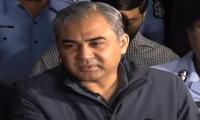Every nation has its own definition of hybrid warfare, which is usually related to its threat perception. A popular definition of hybrid warfare is: “a military strategy that employs political warfare with conventional warfare and cyber warfare plus other instruments including economic warfare and diplomacy”.
The definition that appeals to me describes “hybrid warfare as the synchronised use of multiple instruments of power tailored to specific vulnerabilities across the full spectrum of societal functions of a target nation to achieve synergistic effects”.
Hybrid warfare is a new name given to a very old concept, as old as warfare itself. The use of the political and economic instruments and the use of spies to cause confusion within the enemy’s forces and even in their general population were tactics practised effectively by the Mongols, the Roman Empire and even in the American civil war.
However, this new coinage is justified because the future wars that are likely to confront us will rely more on other instruments of power and less on the kinetic or raw military power. Hybrid warfare can become the preferred choice of weak nations and informal entities like the TTP or the IS. On the other hand nations with superior military power may also prefer the hybrid option because of the cost of, and restrictions on, the use of superior conventional power. India is one such power that has chosen the hybrid route because its superior military power has been checkmated by Pakistan’s nuclear deterrence.
Although I strongly believe in peace between India and Pakistan, I do realise that today India is the primary external threat to our security and wellbeing. India has indeed developed a very strong and potent military instrument and its political and military leadership would want to cut Pakistan to size by using its superior military power. What is keeping the Indians at bay is the nuclear deterrence that exists between our two countries. Although Indian leaders continue to threaten Pakistan with surgical strikes and other offensive kinetic actions below the nuclear threshold, they can never be sure of Pakistan’s response and the possibility of a nuclear exchange – which would destroy both countries. Pakistan’s calculated ambiguity has helped.
As common citizens of Pakistan, we must be aware of this new threat and how it will impact the general population. We should be aware of two aspects of hybrid warfare. First, the sharp line between war and peace has vanished – or has at least been diffused. Most of the activities of a hybrid offensive can and will be conducted during peacetime. The second aspect of the hybrid war is that defensive measures will have to be taken by various elements of the target nation and not just by the conventional military. We need to expand on these aspects of hybrid warfare.
The primary objective of hybrid warfare is to weaken the target nation from within, even before the first bullet is fired. A corollary of this objective is that a nation that has multiple weaknesses and fault lines will be more vulnerable to hybrid attacks. Unfortunately, today Pakistan has a number of serious fault lines and can be exploited by an intelligent enemy. Some of our known fault lines are: poor governance, a weak economy, provincialism, religious differences, illiteracy and poverty. Besides these fault lines, there are a number of other issues, which can also be exploited.
For example a senior Indian intelligence official once pointed out to me, and I quote, “You may live in the belief that Azad Kashmir is calm and peaceful but once we decide to stroke (sic) the existing discontent then the Kashmir issue will take another shape”. With the Kashmir Valley on the boil, it will be difficult for the Indians to destabilise AJK. However, Pakistan should be alive to this theat.
Today mass communication has endless power. Social media and mainstream media are shaping opinion around the world. Twitter and blogs have become effective instruments to change opinions. While Pakistan is fighting terrorism successfully, and at a great cost, the international media is convincing the world that Pakistan is playing a double game. We seem to be failing in propagating our narrative; this has huge negative implications for Pakistan. This is just one example of the role of the media in promoting or condemning a narrative. The role of the media has to be understood and integrated into our defence against hybrid warfare.
Defence against war has generally been placed in the military sphere. However, fighting a hybrid war requires the close integration of various departments of the government and may include media, diplomacy, economics, political manoeuvring and other instruments to defeat the hybrid threat. At the moment it is the military that is alive to the hybrid threat and should be charged with educating civil servants and the political leadership, possibly through the National Defence University. Concurrently, or as a follow up, the Ministry of Information should educate the masses too. In essence, the whole nation has to be on the same sheet of music in understanding this continuing threat. However, I offer a word of caution; defence against hybrid war should not be used by the government or its agencies as an excuse to curtail human rights and democracy.
Intelligence is a key instrument in conventional war; its role in hybrid war increases manifold. A classic example of the use of intelligence to destabilise a nation is the role of foreign intelligence agencies in Balochistan. This is a classic case of foreign powers utilising an existing fault line. It is rumoured that the same foreign powers are supporting the TPP to destabilise Pakistan.
Pakistan needs to take the threat of a hybrid war seriously. There is a need to strengthen the institutional mechanism above the three service headquarters and the Joint Chiefs of Staff Headquarters, which is the National Security Council/Committee (NSC). It may even be advisable to create three cells/directorates within the NSC for joint intelligence, counterterrorism and hybrid warfare. It is high time we became serious about redesigning the NSC structure and making it more potent.
The writer is a former national security adviser.
Data, today, defines how we make decisions with tools allowing us to analyse experience more precisely
But if history has shown us anything, it is that rivals can eventually unite when stakes are high enough
Imagine a classroom where students are encouraged to question, and think deeply
Pakistan’s wheat farmers face unusually large pitfalls highlighting root cause of downward slide in agriculture
In agriculture, Pakistan moved up from 48th rank in year 2000 to an impressive ranking of 15th by year 2023
Born in Allahabad in 1943, Saeeda Gazdar migrated to Pakistan after Partition







